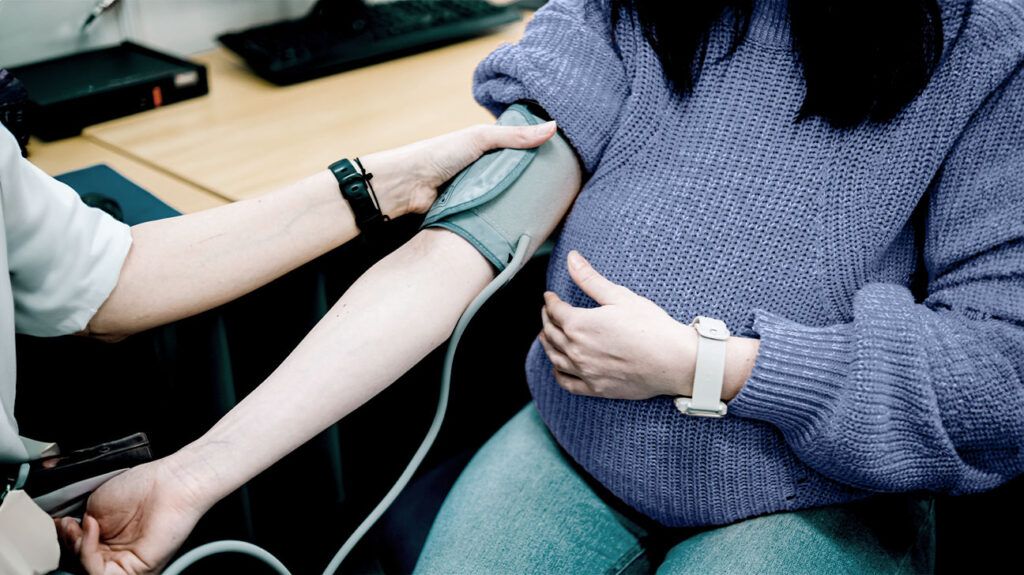Eclampsia is a medical emergency that can occur during and shortly after pregnancy. It is a complication of preeclampsia. Managing eclampsia is crucial to reducing the significant risks to both the birthing parent and the fetus.
Eclampsia is a severe and potentially life threatening medical condition that can develop during and after pregnancy, particularly in the later stages. Symptoms include seizures, high blood pressure, and organ dysfunction.
This article discusses eclampsia, including its causes, treatment, prevention, and postnatal care for a full recovery.

Managing and
- prevent and manage seizures
- treat high blood pressure
- stabilize the birthing parent and also the fetus if the condition occurs during pregnancy
When a person presents with the characteristic symptoms of eclampsia, doctors and OB-GYNs follow a structured and comprehensive approach to manage and treat this life threatening condition.
A healthcare professional will check a person’s blood pressure during each prenatal visit. If the individual has high blood pressure, especially at or after
Magnesium sulfate is a medication that
If a person is having a seizure, management of eclampsia may involve:
- immediate medical attention
- seizure control
- blood pressure management
- close monitoring
- delivery of the baby
- supportive care
- postpartum care
- neonatal care
Learn more about magnesium and eclampsia.
What is eclampsia?
Eclampsia is a hypertensive disorder that
Eclampsia occurs when a person experiences generalized tonic-clonic seizures as the final stage of preeclampsia, a condition that causes a sudden rise in blood pressure and damage to organs such as the liver and kidneys. It can develop at or after 20 weeks of pregnancy, during labor, or in the postpartum period.
Approximately
Recovery after eclampsia can be challenging. Many people experience a range of physical and emotional challenges following the condition. It is essential to have a comprehensive postnatal care plan in place to ensure a full recovery,
- attending regular check-ups
- managing blood pressure
- seeking emotional support
- discussing birth control
- considering nursing
- monitoring long-term health
Comprehensive postnatal care can ensure a healthy recovery and positive future well-being.
The exact cause of eclampsia
- First-time pregnancy: A person experiencing their first pregnancy may be at a higher risk.
- History of preeclampsia or eclampsia: A previous history of preeclampsia or eclampsia can increase the risk of recurrence.
- Age: Individuals under the age of 20 years and over 35 may be at an increased risk.
- Multiple gestations: Pregnancies involving twins, triplets, or more put additional strain on the body, leading to a higher risk.
- Pre-existing medical conditions: People with pre-existing medical conditions such as hypertension, diabetes, and kidney disease have a higher risk.
- Family history: Other family members who have a history of preeclampsia may increase the risk.
- High blood pressure: People with long-term high blood pressure or blood vessel disorders are at a higher risk of developing eclampsia than others.
- Race: African American individuals have a higher risk of preeclampsia with a threefold higher rate of mortality.
- Obesity: Those who have obesity are at a higher risk of developing eclampsia than others.
Learn more about the differences between eclampsia and preeclampsia.
Eclampsia occurs in approximately 1.6–10 per 10,000 deliveries in developed countries and 50–151 per 10,000 deliveries in developing countries. While eclampsia and maternal deaths due to pregnancy-related hypertension have decreased in developing countries, they remain a leading cause of maternal mortality in the United States and contribute to 14% of global maternal deaths.
With timely and appropriate medical intervention, the outlook for people who experience eclampsia can be positive. However, the long-term health of the birthing parent may still be at risk. While the immediate seizures are manageable, complications such as damage to organs may have lasting effects.
It is crucial for the person and healthcare providers to work together to manage the condition effectively and help reduce the risk of future health complications.
Preventing eclampsia is not always possible, but several measures that can reduce the risk include:
- having appropriate prenatal care
- monitoring blood pressure
- looking out for signs of preeclampsia
- following a healthy lifestyle
- having aspirin therapy
- attending regular medical follow-ups
- delivering the baby early
Eclampsia is a severe and potentially life threatening condition that can develop during pregnancy, primarily in the later stages. It can also develop shortly after labor. Preeclampsia can precede eclampsia, which involves elevated blood pressure and organ damage.
The management of eclampsia is a medical emergency that involves controlling seizures, managing blood pressure, and delivering the baby if necessary. Recovery after eclampsia requires regular follow-up, blood pressure management, emotional support, and long-term monitoring.
While prevention is not always possible, early detection and proper prenatal care can help reduce the risk. It is essential for both healthcare providers and pregnant individuals to be aware of the risk factors and measures to help manage and prevent this condition. With the proper care and support, many people can recover fully from eclampsia.
